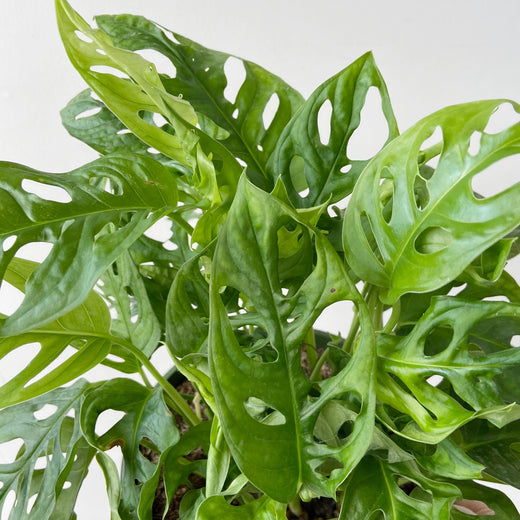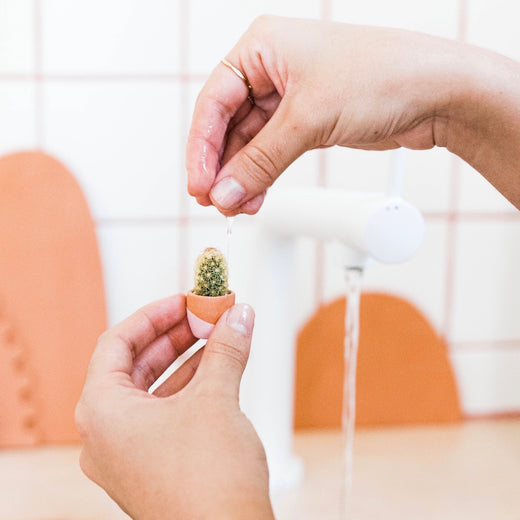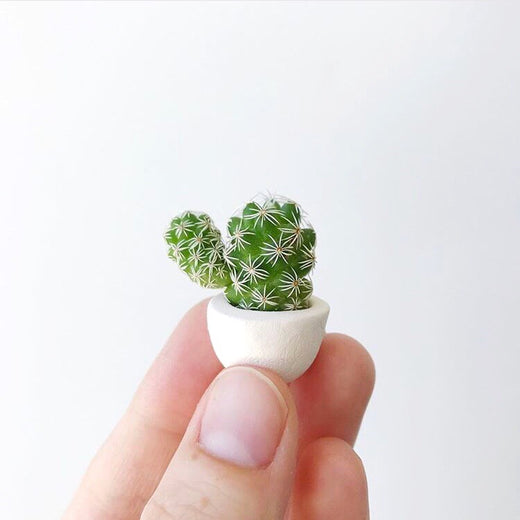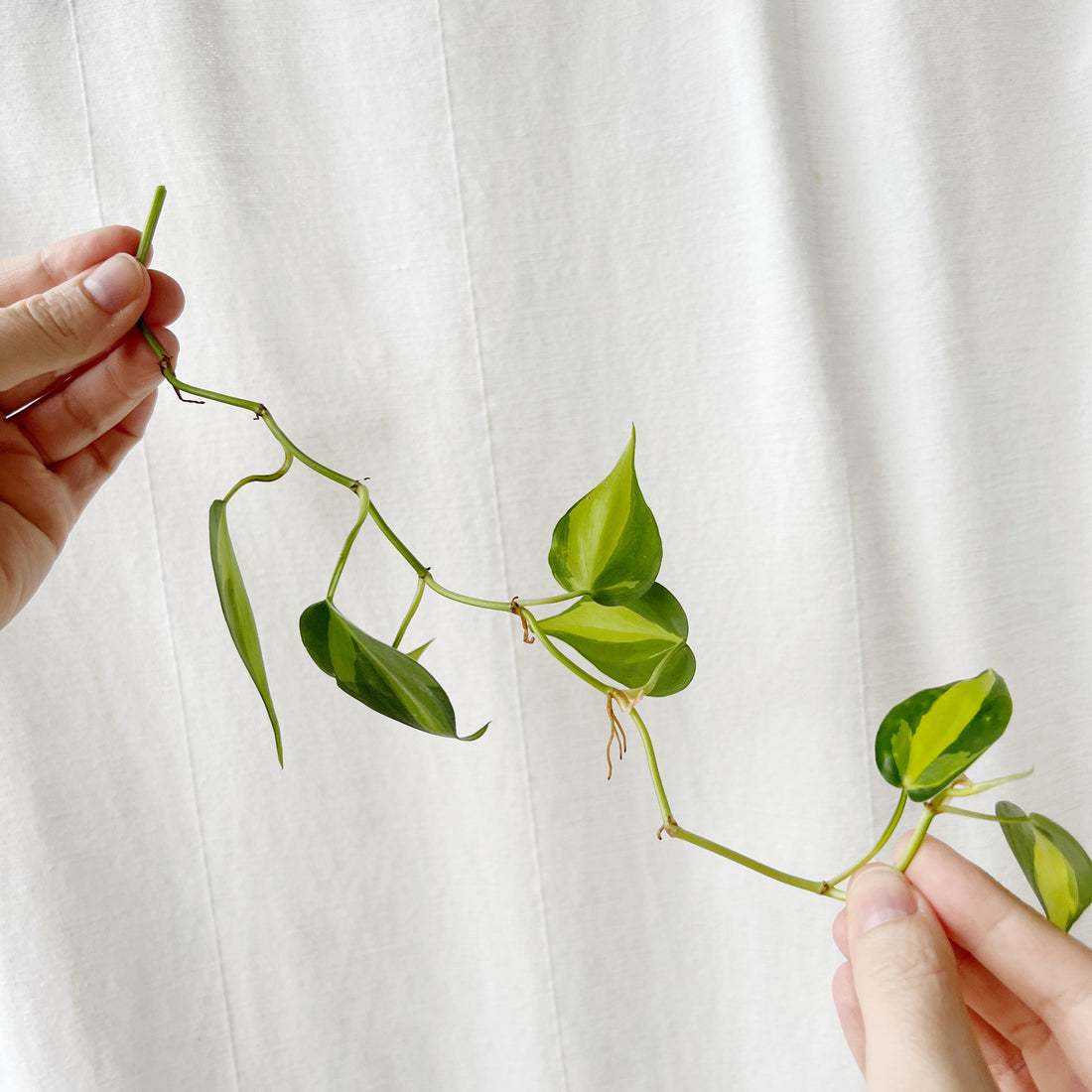Pruning Your Houseplants: Everything You Need to Know about Why When + How!
As a former plant killer, I know how intimidating it can be to prune your plants. I see you and how hard you (and your plant) have worked hard for all its growth and you don’t want to mess it up.
I want to make sure you have all the support you need - more than the generic and vague information that is commonly available on the internet about plant care. This is what we learned about pruning with our own plants through the journey of becoming reformed plant killers, to having greenhouses and a full plant company where we grow our own plants.
So if you are wondering…- Why it is so important to prune houseplants? What are all the benefits?
- When is best time to prune?
- How do you prune your plants without damage or regrets?
- How can you prune your plants to make sure they’ll grow more, not less?
Then this blog is for you!
Why prune your houseplants
Whether you’ve noticed your plants are looking lanky or you just want to make sure you are taking the best care of your plants, pruning your houseplants is an important part of your plant care routine.
There are several reasons why you should prune your houseplants regularly:
1. Promotes healthy growth:
It is important to trim your plants to promote healthy growth and keep the plant looking and feeling its best.
Pruning damaged or dead branches encourages new growth and improves the overall health of the plant because the plant can use its energy to focus on the healthy leaves and on making new leaves instead of healing damaged ones.
2. Controls the plant’s size:
Pruning the leaves, and even the roots of a plant, can help keep a plant at a manageable size so it does not need to be repotted into a new planter.
To learn more about how to keep your plants super healthy without planting them into a new planter read more here.
It also helps them not become too top-heavy or stretching towards light as quickly when its not getting enough sun, like in Fall and Winter.
You can tell this is happening is your plant looks lanky or starts to have long spaces between leaves like this:

3. Enhances plant appearance:
Pruning can be used to shape a plant into a desired form and improve the overall appearance of the plant - but when done properly and at the right time, as I will explain - it can make a plant grow more and fuller!
And if your plant is variegated, (meaning it has white, pink, or other unique coloring) trimming off non-variegated leaves will promote more variegated growth.
4. Prevents pests and disease:
Pruning can remove infected or infested branches, preventing pests and disease from spreading to other parts of the plant.
Many times yellowing or brown spots on leaves can be signs of pests like mealy bugs or spider mites. Pruning is a great time to inspect your leaves and catch any of these problems as early as possible.
When to prune your houseplants
One question I get asked a lot is when is the best time to prune houseplants.
One thing is for sure, we tend to do things differently with our plants.
A lot of people say to prune your plants when they are at their peak growing stage but our favorite time to prune our plants is just before their peak growing season and just after.
Even when your plants get tons of natural light, plants can get stretched out when they are just nearing the end of Winter when plants have had less light for a while.
Just before Spring with a Touch Up at the End of Summer!
If you prune your plants just before Spring, it will take care of any lanky, stretched branches, scraggly spots from Winter leaf loss, and it will help the plant to know it is time to make some new leaves!
The plant will start pushing out new leaves out of its nodes just in time for Spring when those leaves will be able to get tons of sun and produce even more leaves.
If you wait until the plant's active growing season then you’ll just have a stretched out plant with more leaves or an even more top heavy plant. The branches and stems will not shrink back down no matter how much sun it gets.
If you need an easy way to tell when the end of Spring is near, just try it once there has been at least one day that seems a little warmer than the rest. It doesn’t matter if it is cold a while after the pruning.
In one extreme example, I completely cut back my neighbors' lanky Monstera deliciosa in mid-February in North Carolina when the weather was in the 30s and 40s. And TWO DAYS LATER, it had all of these baby leaves pushing out!
I am not suggesting to cut off all the leaves of your plant but this one was not savable as is and look at it go!

You’ll also want to prune your plants a bit at the end of Summer so that the plant will focus its energy on its overall health, and you will not have plants that are too top heavy or will stretch as much for light during the darker parts of the year.
How to prune your houseplants
Now that you know when and why to prune your houseplants, let's talk about how to do it with the most success!
Here are some easy steps to follow:
You will need a clean, sharp pair of pruning shears or scissors. Dull shears can damage the plant. Sterilize your tools before and after pruning to prevent the spread of disease.
Pruning shears are better for thicker plants and work well for thin stems. While sharp scissors are fine for thin stems.
First, look for leaves and branches that are dead, damaged, or diseased. These should be removed to promote healthy growth.
Next, look for areas that seem like they are too lanky or top heavy. You’ll want to take this section and follow it down to the area you’ll cut to remove it.
Consider the growth pattern of the plant and the desired shape.
Prune back branches or stems above a healthy node, which is the point where new growth will emerge.
A node is one of the joints where leaves or roots come out that often look like a line on the stem of the plant.
Here are examples of nodes on different plants:
4. Prune at a 45-degree angle:
Make clean cuts at a 45-degree angle to prevent pressure that could crush the stem causing damage to the remaining plant tissue.
If you leave a node on the branch or leaves you are cutting, you can propagate that plant in water and have an entirely new plant! See more about how to trim to propagate here.
Finally, here are all the healthy leaves from my neighbors monstera I completely cut down propagating in this jar and water!

And if you are pruning just before Spring that propagation could end up being a whole new happy plant in no time!
Pruning your houseplants is an essential part of plant care, promoting healthy growth and keeping your plants looking their best. And we want it to be easy and enjoyable for you too. Remember to prune just before Spring, with a follow up at the end of Summer, and to look for any pruning maintenance regularly throughout the year. And keep some of those healthy cuttings to propagate new plant babies! By following these simple steps, you can enjoy healthy, thriving houseplants that are full of leaves the entire year.
Have questions? Feel like I missed something? Just send us an email at care@tierrasolstudio.com and I will be happy to hear from you!






